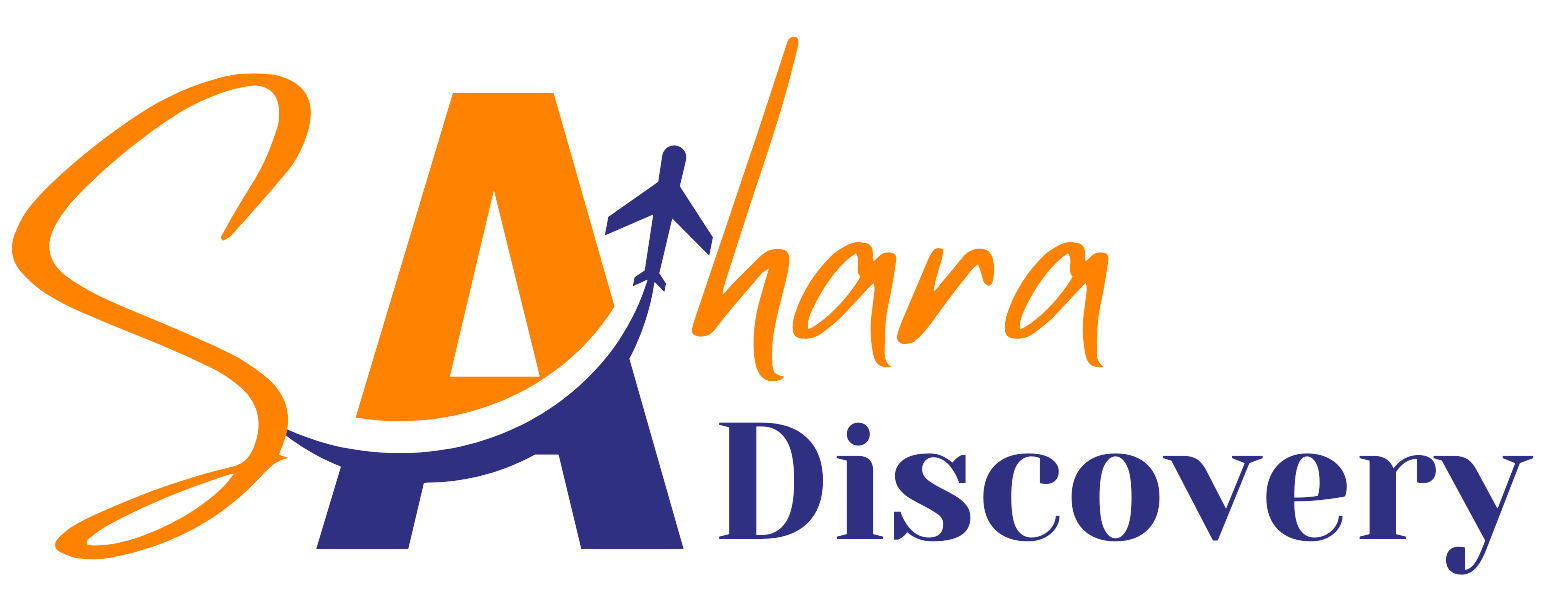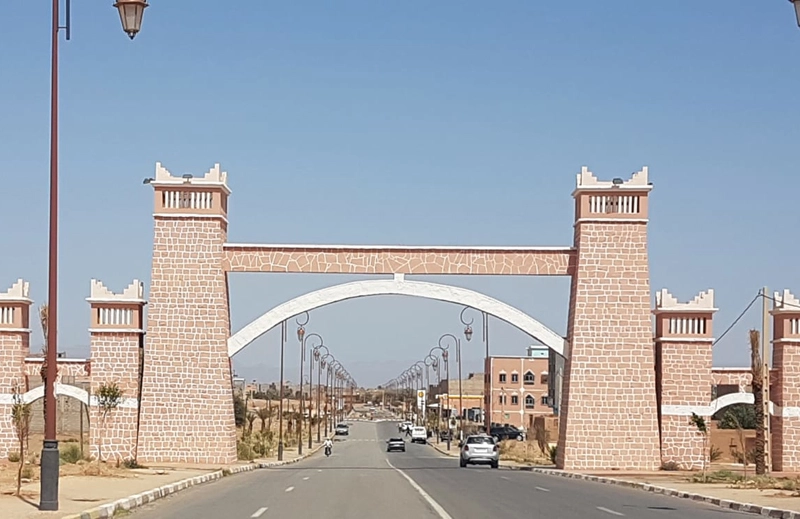Things to Do in Zagora: The Ultimate Guide to Morocco’s Desert Gateway
Looking for the top things to do in Zagora? Located on the edge of the Sahara Desert, Zagora is the perfect base for desert adventures, camel treks, and exploring Berber culture. From golden dunes to historic kasbahs, Zagora offers travelers an unforgettable Moroccan experience.
Standing at the edge of Zagora, with the vast Sahara stretching before you and the whispers of ancient caravans in the air, you’re about to discover one of Morocco’s most captivating destinations. Unlike the tourist-packed streets of Marrakech or the labyrinthine medinas of Fes, Zagora offers something different an authentic gateway to the desert that has served as a vital crossroads for millennia.
This comprehensive guide to things to do in Zagora goes beyond typical tourist recommendations. Based on local insights and extensive research, we’ll take you through the essential Zagora activities, hidden gems, and practical tips that will transform your visit from ordinary to extraordinary. Whether you’re planning a desert expedition, seeking cultural immersion, or simply passing through on a longer Moroccan journey, this guide will help you experience the very best of this desert frontier.
Why Visit Zagora? The Desert Gateway of Morocco
Zagora holds a special place in Morocco’s cultural landscape as the historical launching point for trans-Saharan trade caravans. For centuries, merchants departed from here on the arduous 52-day journey to Timbuktu, carrying precious goods and returning with gold, ivory, and slaves from sub Saharan Africa.
Today, Zagora serves as the perfect base for Sahara Desert tours and adventures. What sets it apart from other Moroccan destinations is its authentic desert town atmosphere less commercialized than Merzouga, more accessible than remote outposts, yet still offering that magical connection to the Sahara that travelers seek.
The surrounding Draa Valley, with its ribbon of palm groves stretching nearly 100 kilometers, creates a stunning contrast against the arid mountains and desert landscapes. This combination of cultural heritage, desert access, and natural beauty makes Zagora uniquely worth your time.
Things to Do in Zagora: Desert Adventures & Excursions
Camel Trekking Through the Sahara
Why it’s special: There’s simply no more iconic way to experience the Sahara than atop a camel, following the same routes used by desert caravans for centuries. The rhythmic pace of these “ships of the desert” allows you to absorb the vastness of the landscape in a way that modern transportation never could.
Experience options:
- Sunset treks (2-3 hours): Perfect for those short on time but wanting the essential experience
- Overnight adventures: The complete immersion, including dinner, sleeping under the stars, and sunrise over the dunes
Insider tip: Despite what many tour operators advertise, camels can be uncomfortable for long periods. Bring a scarf to protect against sand, wear long pants to prevent chafing, and don’t be shy about requesting breaks. For ethical camel trekking, look for operators where animals appear well-fed and rested, with reasonable working hours.
Practical information:
- Location: Most treks depart from Zagora town or nearby camps
- Cost: 250-350 MAD for sunset treks; 600-1200 MAD for overnight experiences (including accommodation and meals)
- Time needed: 2-3 hours for sunset trek; 24 hours for overnight experience
- Recommended providers: Sahara Discovery, a well established local company with excellent English-speaking guides and ethical animal treatment practices. They offer everything from half-day excursions to comprehensive multi-day desert adventures. Other reputable options include Desert Dream Tours and Sahara Expedition Morocco (always verify current ratings before booking).
4×4 Desert Excursions
Why they’re special: While camel trekking offers romance, 4×4 tours allow you to cover more ground and reach the most stunning dunefields that are too far for camels in a short timeframe.
Key destinations:
- Erg Chigaga: The more remote and less visited dunefield (2-3 hour drive from Zagora). These wild dunes stretch for 40km and reach heights of 300 meters a true desert wilderness experience.
- Erg Lihoudi: Smaller dunefields closer to Zagora (about 30 minutes), perfect if you’re short on time but still want the classic dune experience.
Insider tip: Early morning or late afternoon departures offer the best photography lighting and more comfortable temperatures. Local operator Sahara Discovery offers customizable 4×4 tours that include authentic stops at nomad camps genuinely off the tourist trail.
Practical information:
- Cost: 800-1500 MAD per day depending on distance and number of passengers
- Time needed: Half-day for closer dunes, full day for Erg Chigaga
- What to bring: Water, sunscreen, hat, camera, cash for any purchases from nomads
- Tour options: Sahara Discovery offers well maintained 4×4 vehicles with experienced drivers who know the hidden gems of the region
Visiting Nomad Camps
Why it’s special: The Sahara is not just a natural wonder but home to nomadic Berber families who have mastered desert survival for generations. Visiting an authentic camp offers cultural insights that go far beyond typical tourism.
What to expect: Tea ceremonies, traditional bread-making, insights into nomadic herding practices, and the opportunity to understand a rapidly disappearing way of life.
Cultural sensitivity: Only visit camps with guides who have established relationships with the families. Always ask before taking photos, dress modestly, and bring useful gifts rather than candy (tea, sugar, or school supplies are appreciated).
Practical information:
- Location: Various locations throughout the desert near Zagora
- Cost: Usually included in desert tours or approximately 200-300 MAD as a standalone experience
- Time needed: 1-2 hours
Sandboarding on the Dunes
Why it’s special: Combining the thrill of downhill boarding with the unique texture of sand dunes creates an exhilarating experience that’s accessible even to beginners.
Insider tip: Morning sessions when the sand is cooler provide better glide. Most equipment is basic, so manage expectations this is about fun, not professional sporting standards.
Practical information:
- Location: Erg Lihoudi or any nearby dunes
- Cost: 100-150 MAD for board rental and basic instruction
- Time needed: 1-2 hours
- What to know: Wear clothes you don’t mind getting sandy; expect to climb up dunes yourself between runs
Cultural & Historical Exploration in and around Zagora
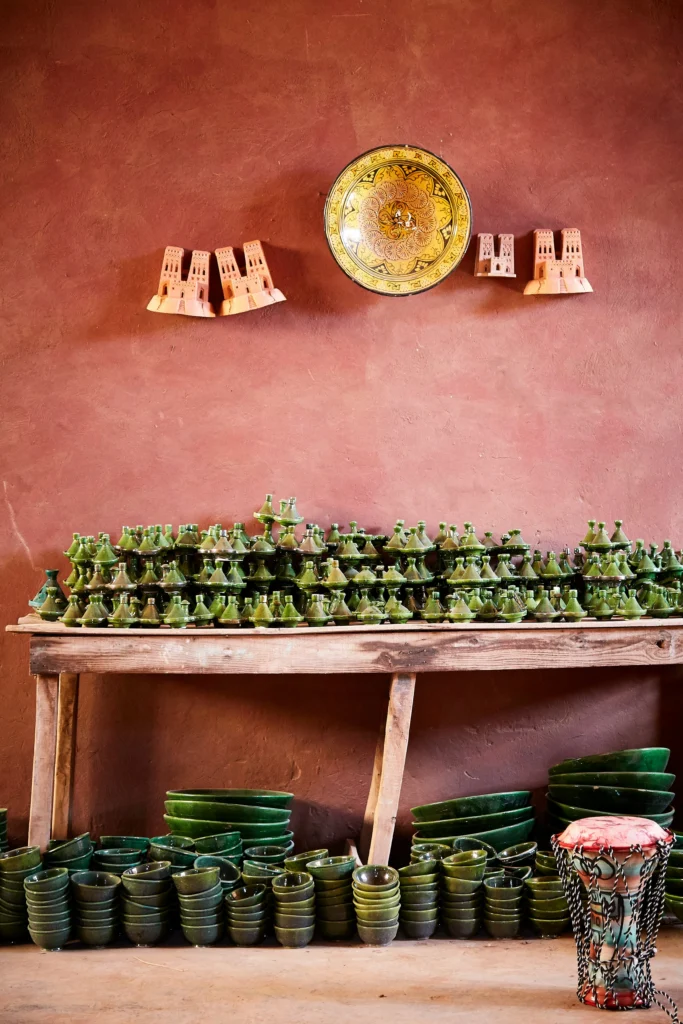
Tamegroute Village
Why it’s special: Just 18 km from Zagora, this ancient spiritual center offers a fascinating glimpse into Morocco’s religious and artistic heritage.
Key attractions:
- Pottery Cooperative: Watch artisans create distinctive green-glazed pottery using techniques unchanged for centuries. The unique green glaze contains copper and manganese mined locally.
- Zawiya Nasiriyya Library: Home to over 4,000 manuscripts dating back to the 13th century, including works on astronomy, medicine, mathematics, and Islamic studies. Some texts are illuminated with gold leaf and natural pigments.
Insider tip: Ask politely at the library to see the oldest manuscript a 13th-century Quran written on gazelle skin. The librarian may show it if you express genuine interest.
Practical information:
- Location: 18km southeast of Zagora
- How to get there: Petit taxi (about 80-100 MAD return trip with waiting time)
- Opening hours: 9am-6pm for pottery; library hours vary, best visited mid-morning
- Cost: Free to enter village; 20 MAD donation for library; no obligation but customary to purchase from pottery cooperative
- Time needed: 2-3 hours
Kasbahs near Zagora
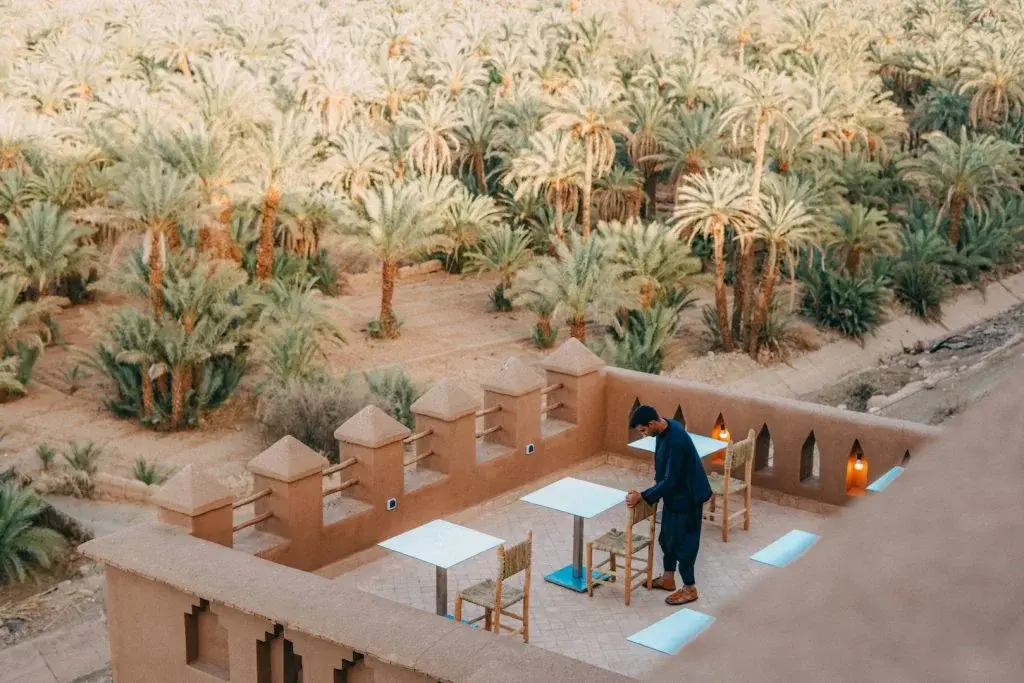
Why they’re special: These fortified earthen structures tell the story of a time when desert teams needed protection from raiders, while showcasing impressive mud-brick architecture adapted perfectly to the harsh desert climate.
Kasbah des Caids in Tamnougalt: This partially restored 16th-century fortress once housed the powerful Glaoui family who controlled trade routes. The intricate decorative elements geometric plasterwork, carved cedar ceilings, and traditional Berber symbols reveal sophisticated artistic traditions.
Architectural significance: Notice how the thick walls provide natural insulation, keeping interiors cool in summer and warm in winter. The strategic narrow passages and high walls demonstrate defensive design principles.
Insider tip: Ask about the underground prison cells and grain storage areas that highlight the kasbah’s dual role as fortress and community center.
Practical information:
- Location: Tamnougalt, 19km north of Zagora in the Draa Valley
- How to get there: Grand taxi (150-200 MAD round trip)
- Opening hours: 8am-6pm daily
- Cost: 20 MAD entrance fee, plus 30-50 MAD for local guide (recommended)
- Time needed: 1-2 hours
The Famous “Timbuktu 52 Days” Sign
Why it’s special: More than just a photo opportunity, this reconstructed sign marks the historical departure point for caravans heading deep into the Sahara toward Timbuktu.
The history: The original sign dates back to when Zagora served as the last major trading post before the deep desert. The “52 days” referred to the journey time by camel to reach Timbuktu a stark reminder of the isolation and hardship faced by desert travelers in the pre modern era.
Insider tip: The current sign is a reproduction placed for tourists, but stands near the original location. Visit at sunset when the light gives the sign a golden glow against the mountain backdrop.
Practical information:
- Location: Near the southern edge of town
- Cost: Free
- Time needed: 15-20 minutes
Exploring Zagora Town & Souk
Why it’s special: Unlike the overwhelming souks of larger cities, Zagora’s market offers a more relaxed shopping experience where you can observe everyday Moroccan life.
Best finds:
- Daggers: Distinctive curved knives with decorative handles
- Date products: Zagora is famous for its dates, available in various forms
- Woven items: Handmade rugs, baskets, and mats using palm fibers and local wool
- Silver jewelry: Look for Berber-style pieces with amber, coral, or turquoise
Insider tip: The souk is busiest on Wednesdays and Saturdays. For the most authentic experience, arrive before 10am when locals do their shopping.
Haggling guidance: Start at about 40% of the initial asking price and work up from there. Be prepared to walk away it’s often the most effective negotiating tactic.
Practical information:
- Location: Town center
- Best time to visit: Morning hours, particularly Wednesday and Saturday
- Time needed: 1-2 hours
Jewish Mellah
Why it’s special: Few visitors realize that Zagora once had a thriving Jewish community that played an important role in trans-Saharan trade networks.
Historical context: Morocco’s Jewish population dates back over 2,000 years. In Zagora, Jewish merchants specialized in silver work and served as intermediaries between Berber cohorts and international trading partners.
Current state: While the Jewish population has largely emigrated to Israel or Europe, the mellah (Jewish quarter) architecture remains, with distinctive features like interior courtyards and balconies facing inward rather than onto the street.
Practical information:
- Location: Northeast of town center
- How to visit: Best with a local guide who can explain the historical context
- Time needed: 30-45 minutes
Nature & Relaxation in Zagora

Draa Valley Exploration
Why it’s special: The Draa Valley contains Morocco’s largest palm grove a 200km-long oasis that creates a striking green ribbon through the desert landscape. This fertile valley has sustained life in this harsh environment for millennia.
Best viewpoints:
- Tizi-n-Tinififft Pass (north of Zagora): Panoramic views of the entire valley
- Walking paths near N’Kob: Access to traditional villages surrounded by palmeries
Insider tip: The best light for photography is during the “golden hours” just after sunrise or before sunset when the palms glow emerald against the red earth.
Practical information:
- Location: Stretches north and south of Zagora
- How to explore: Rental car, hired driver, or guided tour
- Best walking route: The path between Amezrou and Tamegroute offers shade and authentic village scenes
- Time needed: Half-day for basics, full day to explore in depth
Desert Stargazing
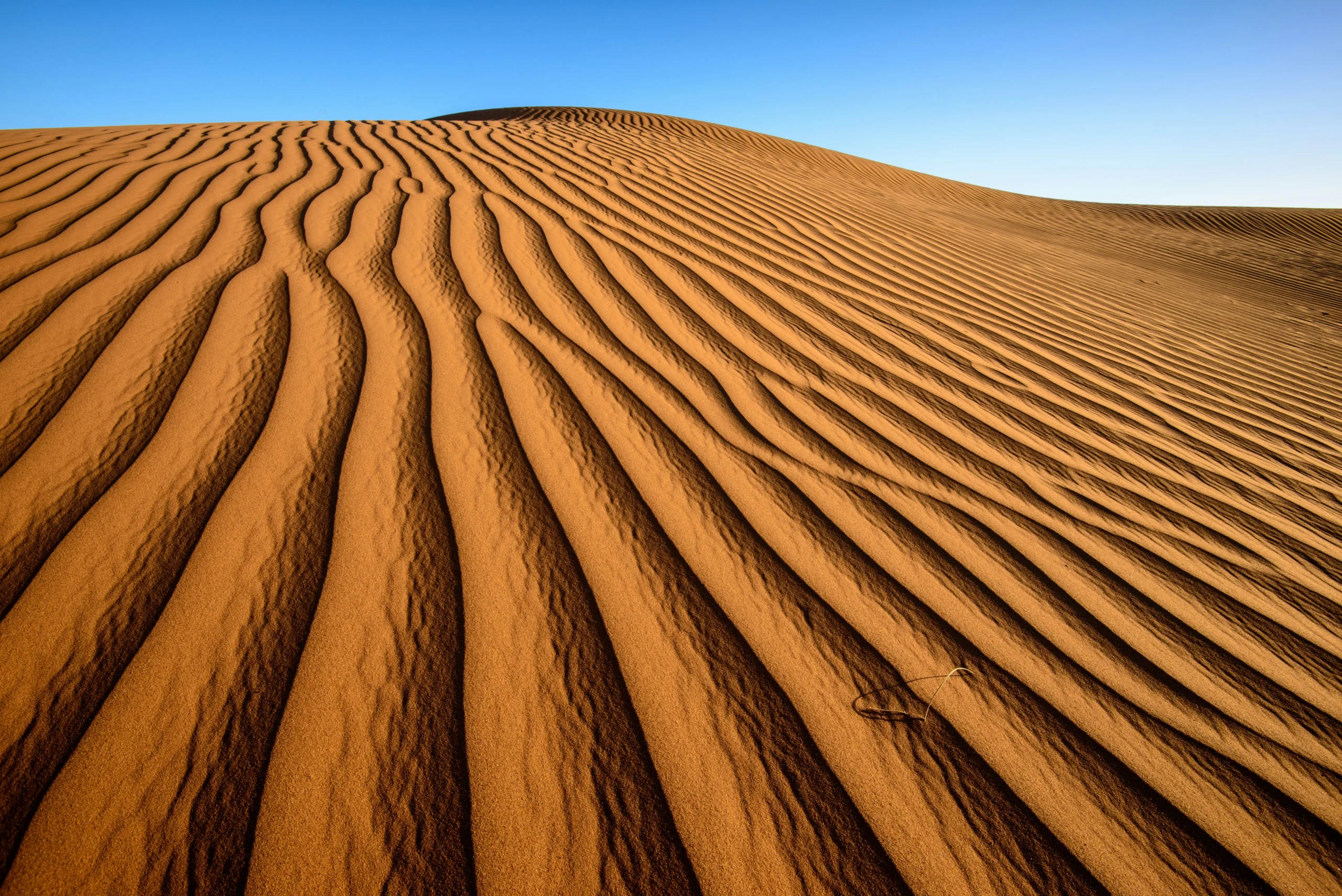
Why it’s special: With minimal light pollution and crystal-clear desert air, the night skies around Zagora offer some of the best stargazing in North Africa.
Best spots:
- Erg Lihoudi dunes (close to town)
- Any desert camp at least 10km from Zagora
- Mountain viewpoints along the road to M’Hamid
Insider tip: Schedule your stargazing during a new moon phase for the darkest skies. The Milky Way is most visible during summer months, while winter offers excellent visibility of Orion and other prominent constellations.
Practical information:
- Best times: 9pm-midnight
- What to bring: Warm clothing (desert temperatures drop significantly at night), binoculars, red flashlight to preserve night vision
- Cost: Free if self-guided; 200-300 MAD for guided astronomical tours
- Time needed: 1-2 hours
Local Life & Food Experiences
Moroccan Cooking Classes
Why it’s special: Learning to prepare traditional Moroccan dishes provides cultural insights and delicious skills to take home. The Zagora region specializes in date-based recipes and unique desert variations of classic Moroccan cuisine.
What you’ll learn:
- Tagine techniques: Mastering the slow-cooking earthenware pot
- Bread making: Traditional methods using outdoor ovens
- Date preparations: Sweet and savory applications of local dates
- Spice mixing: Creating your own ras el hanout blend
Insider tip: Request to include a trip to the market to select ingredients this adds a valuable cultural dimension to the experience.
Practical information:
- Location: Various riads and homes in Zagora
- Cost: 250-350 MAD per person
- Time needed: 3-4 hours
- Recommended provider: Cooking with Fatima (arrange through your accommodation)
Visiting Local Date Farms
Why it’s special: Zagora is renowned throughout Morocco for its exceptional dates. Visiting a farm provides insights into sustainable desert agriculture while offering tastings of varieties rarely found outside the region.
Varieties to try:
- Medjool: Large, sweet “king of dates”
- Khalt: Smaller, intensely flavored local variety
- Jihl: Drier texture with caramel notes
Insider tip: Visit during harvest season (September-October) to see the full production process and access the freshest dates.
Practical information:
- Location: Throughout Draa Valley
- How to arrange: Ask at your accommodation or through tour operators
- Cost: 100-150 MAD for guided visit and tasting
- Time needed: 1-2 hours
Trying Zagora’s Local Specialties
What makes it special: The cuisine of Zagora blends Berber, Arabic, and sub-Saharan influences, creating distinctive flavors that differ from what you’ll find in northern Morocco.
Must-try dishes:
- Medfouna (Berber pizza): Stuffed bread traditionally baked in the sand
- Date tagine with lamb: Sweet savory combination unique to the region
- Harira soup: Traditional soup with regional variations
- Khobz: Fresh bread baked in communal ovens
Where to eat:
- Local experience: Restaurant Kasbah Sirocco (authentic dishes, moderate prices)
- Upscale dining: Riad Lamane (refined traditional cuisine in garden setting)
- Quick and casual: Café Restaurant La Caravane (good for lunch)
Insider tip: Ask specifically for “Zrigat” a refreshing date-based drink rarely found on tourist menus.
Practical information:
- Average cost: 60-150 MAD for main dishes
- Dining hours: Lunch 12:30-3pm; dinner 7-10pm
Practical Travel Planning for Zagora
Best Time to Visit Zagora
| Season | Weather | Pros | Cons |
|---|---|---|---|
| Spring (Mar-May) | 20-30°C days, cool nights | Moderate temperatures, blooming landscape | Occasional sandstorms |
| Summer (Jun-Aug) | 35-45°C days, warm nights | Excellent stargazing, fewer tourists | Extreme daytime heat |
| Fall (Sep-Nov) | 25-35°C days, cool nights | Date harvest, perfect temperatures | High season prices begin |
| Winter (Dec-Feb) | 15-25°C days, cold nights | Crystal clear air, empty desert | Very cold nights, some activities limited |
Optimal time: Mid-September to early November offers the perfect balance of comfortable temperatures, agricultural activity, and reasonable tourist numbers.
Getting to Zagora
| Method | Duration | Cost | Pros | Cons |
|---|---|---|---|---|
| Bus from Marrakech | 6-7 hours | 120-180 MAD | Affordable, regular schedule | Limited legroom, basic comfort |
| Grand Taxi | 5-6 hours | 200-250 MAD per seat | Faster than bus, flexible departure | Must wait for taxi to fill, cramped |
| Private Transfer | 5 hours | 1200-1800 MAD | Comfort, stops on demand | Expensive for solo travelers |
| Rental Car | 5 hours | 350-500 MAD/day + fuel | Complete flexibility | Navigation challenges, road conditions |
Insider tip: The drive from Marrakech crosses the spectacular Tizi n’Tichka mountain pass. If self-driving or hiring a private transfer, allow extra time for photo stops and consider breaking the journey in Ouarzazate.
Getting Around Zagora
- Walking: The town center is compact and easily explored on foot
- Petit taxis: 15-30 MAD for trips within town
- Bicycle rental: Available from some hotels (70-100 MAD per day)
- Hiring a driver: 400-600 MAD per day for excursions to surrounding areas
Accommodation in Zagora
| Type | Price Range | Best For |
|---|---|---|
| Budget Hotels | 150-300 MAD | Travelers watching costs |
| Mid-range Riads | 400-700 MAD | Authentic atmosphere with comfort |
| Luxury Desert Camps | 900-2000 MAD | Unique experience, all-inclusive |
| Kasbah-style Hotels | 500-1200 MAD | Character accommodation with amenities |
Recommendations:
- Budget: Hotel Ksar Tinsouline
- Mid-range: Riad Lamane
- Luxury: Azalai Desert Camp
Essential Packing for Zagora
- Clothing: Lightweight, breathable fabrics; long sleeves/pants for sun protection; warmer layers for evenings
- Footwear: Comfortable closed shoes for walking; sandals for casual use
- Protection: High SPF sunscreen; sunglasses; wide-brimmed hat; lip balm
- Health: Personal medications; anti-diarrhea medicine; hand sanitizer; wet wipes
- Other: Headlamp/flashlight; power bank; cash (ATMs limited)
Insider tip: A lightweight scarf serves multiple purposes sun protection, warmth in the evening, and protection from occasional dust.
Safety & Cultural Etiquette
Safety considerations:
- Zagora is generally safe for tourists
- Use normal precautions regarding valuables
- Drink bottled water and avoid uncooked foods if you have a sensitive stomach
- Negotiate prices before accepting services
Cultural tips:
- Dress modestly (shoulders and knees covered)
- Ask permission before photographing people
- Basic Arabic greetings are appreciated:
- “As-salaam alaikum” (Peace be upon you)
- “Shukran” (Thank you)
- “La shukran” (No thank you)
Connectivity in Zagora
- Wi-Fi: Available in most hotels but can be slow
- Mobile data: Purchase a Moroccan SIM card (Maroc Telecom has best desert coverage)
- Network coverage: 4G available in town; limited in remote desert areas
Sample Itineraries for Zagora
Zagora in 1 Day (Quick Highlights)
- Morning: Explore town center and famous sign, visit souk
- Afternoon: Sunset camel trek to nearby dunes
- Evening: Dinner at a traditional restaurant
Pro tip: Short on planning time? Sahara Discovery offers a comprehensive one-day Zagora tour package that covers these highlights with knowledgeable local guides who enhance the experience with cultural and historical context you might otherwise miss.
Zagora Desert Experience (3 Days)
- Day 1: Arrive, explore town, visit Tamegroute pottery and library
- Day 2: Full-day 4×4 excursion to Erg Chigaga with nomad visit
- Day 3: Morning Draa Valley exploration, afternoon cooking class
Expert recommendation: Sahara Discovery’s three-day “Desert Immersion” package follows a similar itinerary with the added benefit of exclusive access to less-visited parts of the dunes and connections with local families for authentic cultural exchanges.
Zagora as Part of Draa Valley Exploration (5 Days)
- Day 1: Arrive Zagora, town exploration
- Day 2: Tamegroute and Jewish Mellah, evening stargazing
- Day 3-4: Overnight camel trek and desert camp
- Day 5: Visit Tamnougalt Kasbah, date farm tour
For the adventurous: For those seeking a more comprehensive desert experience, Sahara Discovery’s “Complete Draa Valley” 5-day tour package includes all these highlights plus hidden spots only known to locals, with comfortable transportation and carefully selected accommodation options throughout.
Conclusion
Zagora offers travelers a perfect balance accessible enough for those new to Morocco yet authentic enough to satisfy experienced desert explorers. Whether you’re chasing the romance of camel trekking through golden dunes, seeking cultural connections in ancient villages, or simply enjoying the pace of desert life, this gateway to the Sahara delivers experiences that will stay with you long after the desert sand has been shaken from your shoes.
The true magic of Zagora lies not just in its dramatic landscapes and adventures but in the connections you’ll make with local Berber and Arab communities who have called this challenging environment home for generations. By approaching your visit with curiosity and respect, you’ll discover that the things to do in Zagora extend far beyond a simple checklist of attractions to become a meaningful journey into Morocco’s desert heart.
For those who prefer to leave the logistics to experts while still enjoying authentic experiences, working with a reputable local operator like Sahara Discovery can enhance your journey. Their deep connections with the community and comprehensive understanding of the region allow them to create tailored experiences that balance must-see attractions with off the beaten path discoveries whether you have just one day or a full week to explore this fascinating region.
Have you visited Zagora? What was your favorite experience? Share your thoughts in the comments below, or ask any questions you might have about planning your own Zagora adventure!
